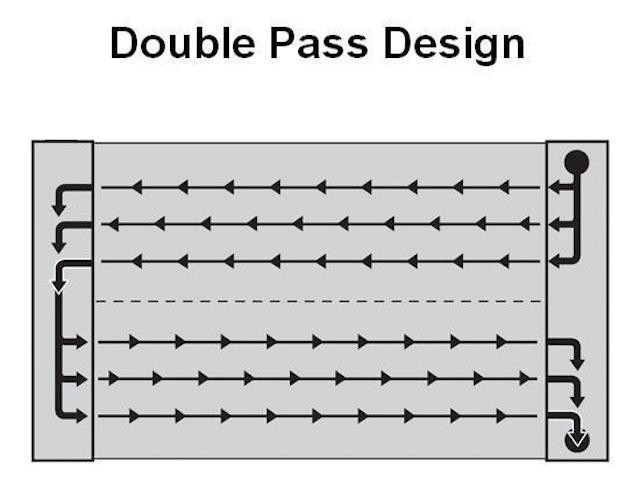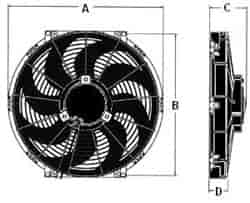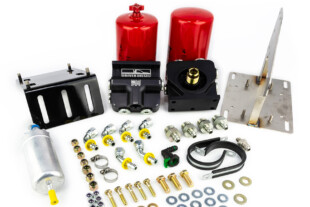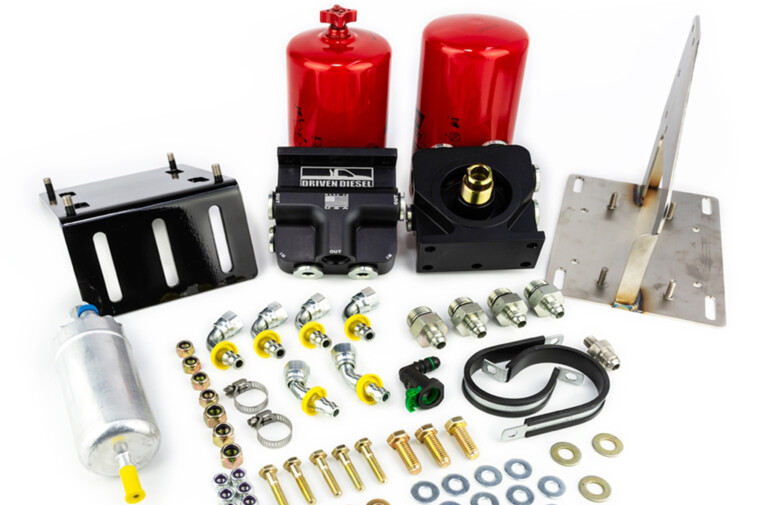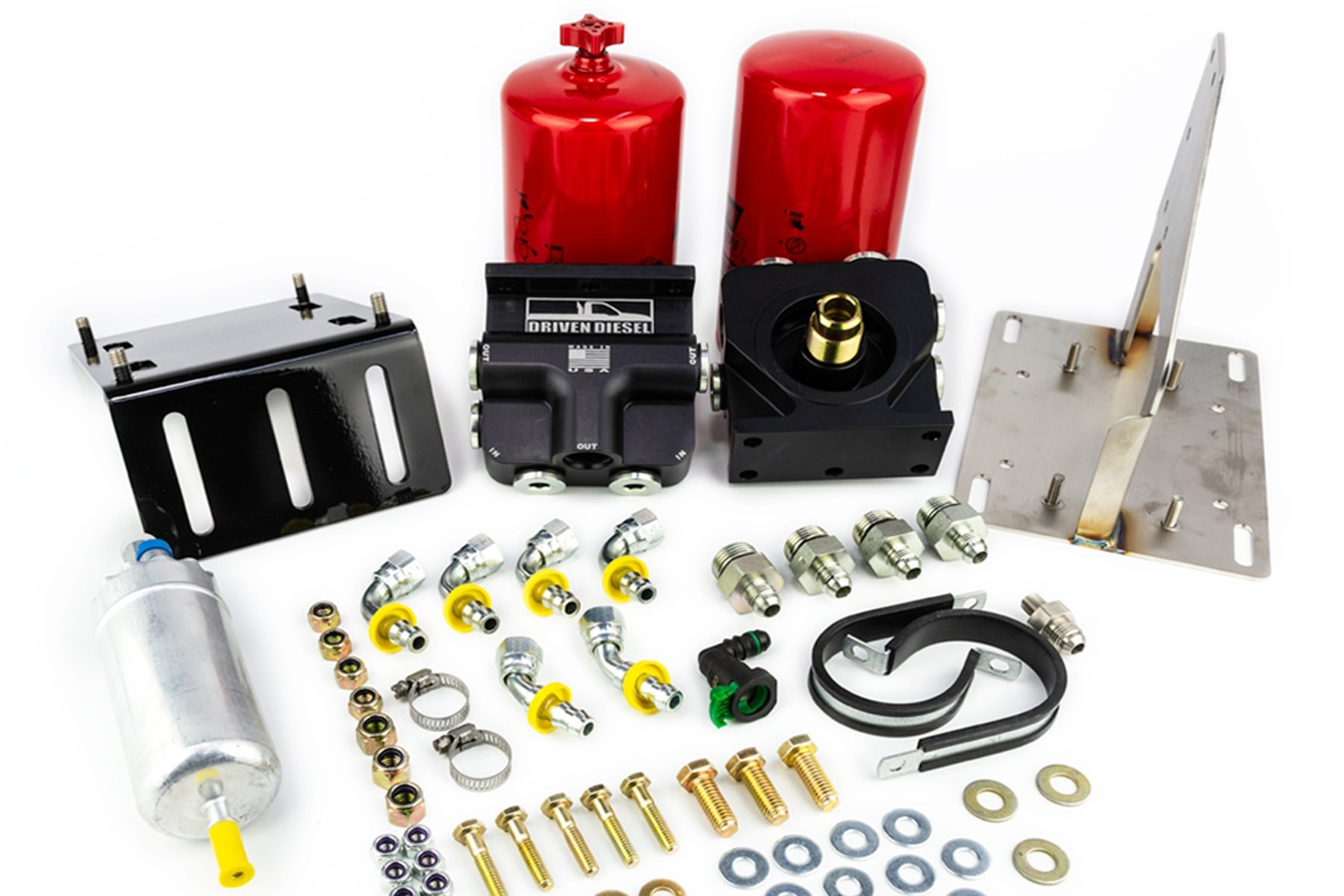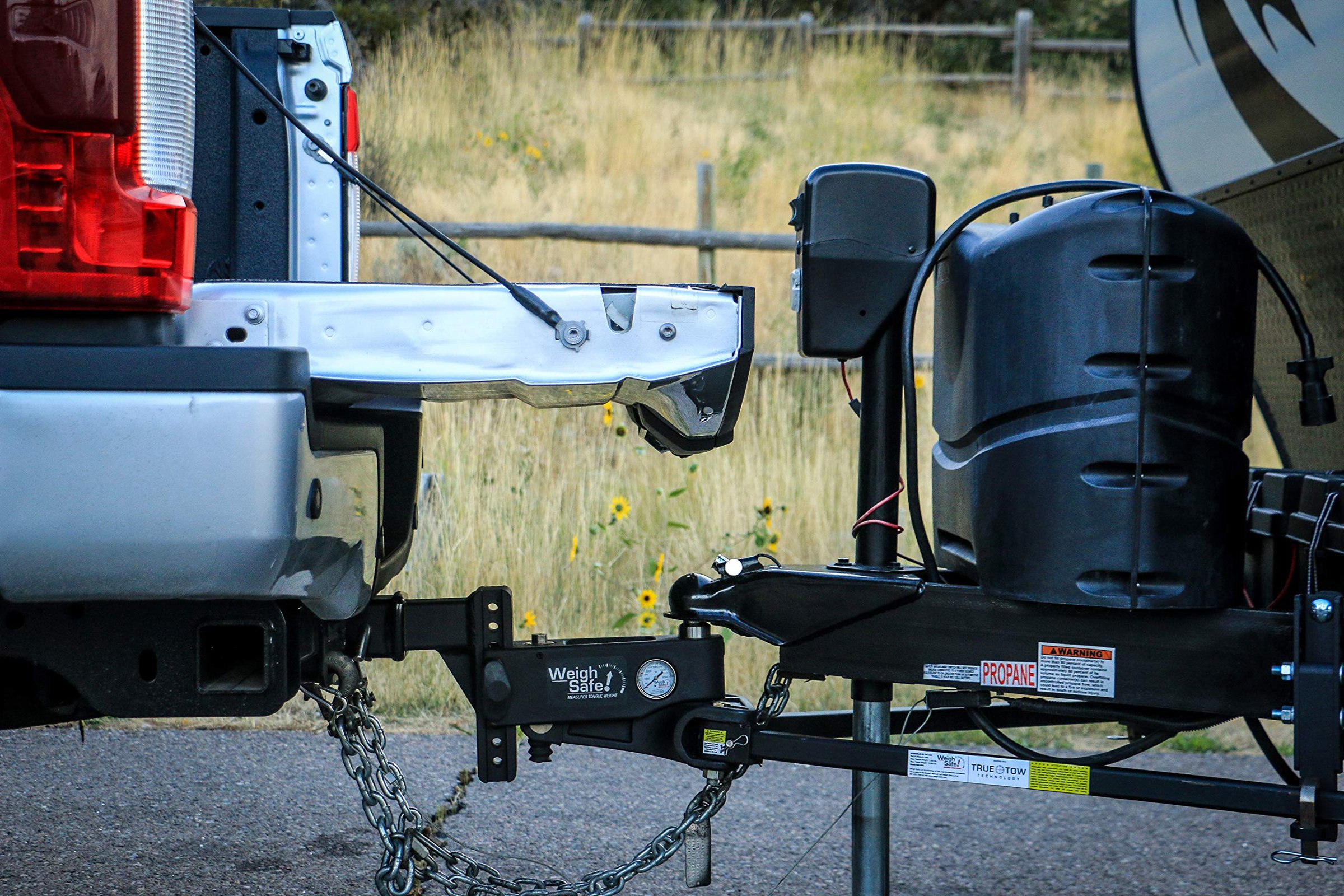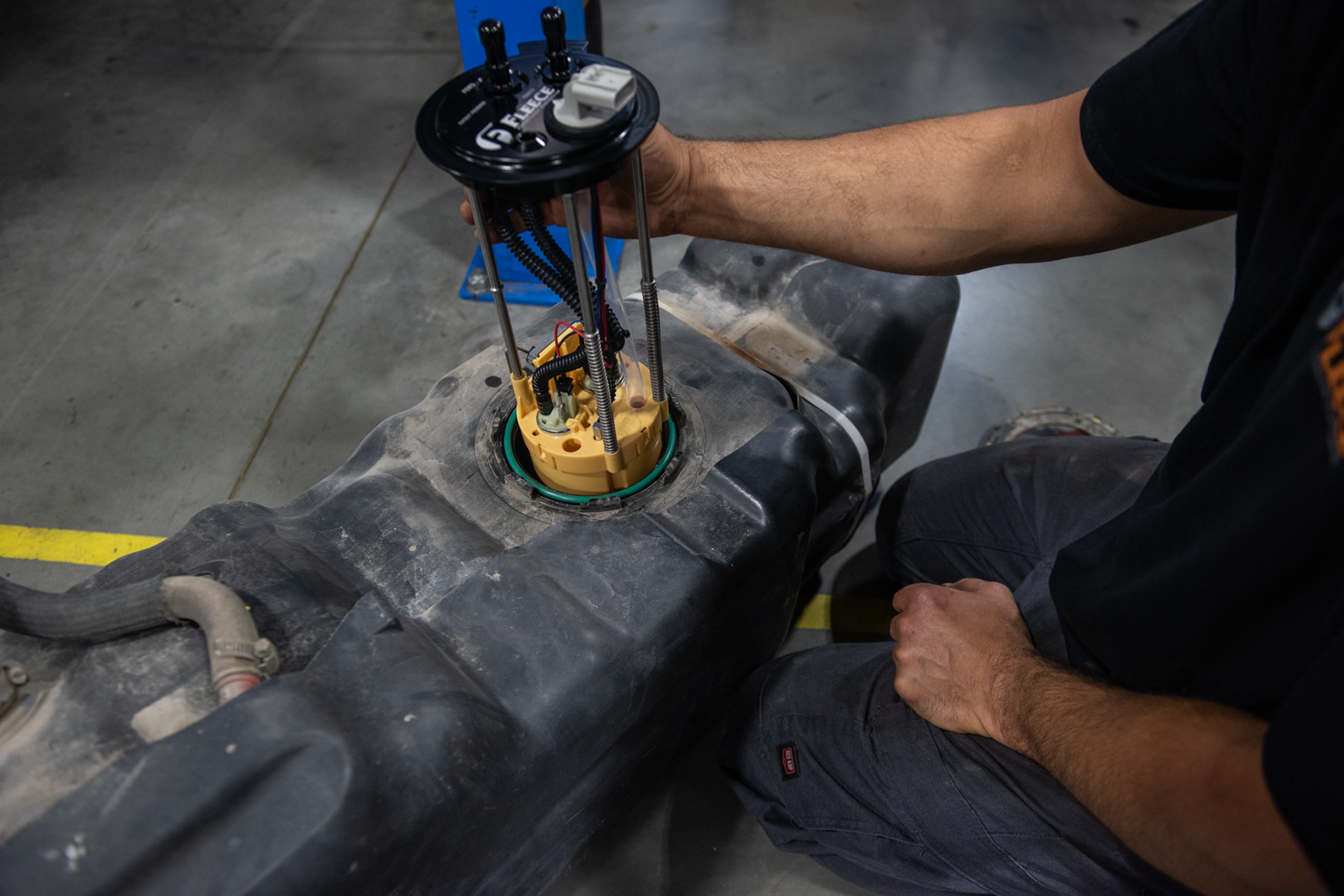 For most of the United States, 2012 brought us a very warm winter, and now an even more warmer summer. Weather experts are predicting that this will be the hottest and most driest summer in quite sometime. Regardless if this is true or not, the summer months are here and with it is the intense heat that we all fear.
For most of the United States, 2012 brought us a very warm winter, and now an even more warmer summer. Weather experts are predicting that this will be the hottest and most driest summer in quite sometime. Regardless if this is true or not, the summer months are here and with it is the intense heat that we all fear.
I would take the extra cooling advantage over half a horsepower every time. – Keith Dorton
In part one we are going to be focusing on radiator, fan selection, and maintenance tips. Part two will focus on what drivers can do to help battle these elements and stay cool.
It All Starts With The Radiator
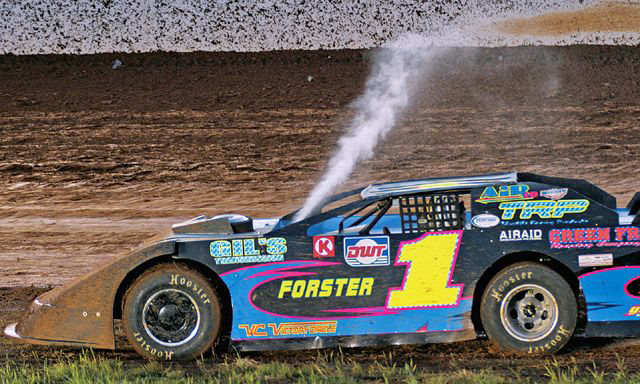
Now is the time to make sure you are preparing your cooling system before you end up like this. image credit: Jeff Huneycutt
There isn’t a more important piece of equipment than the radiator when it comes to the level of your success in beating the heat in the summer months. You need to take your time and find out which radiator will be best for your application before the summer months hit. Frank Militello of Be Cool explained to us, “Testing is the best way to find out what radiator is best for you. Take in to consideration your driveline combination along with length of track, and the normal amount of laps you expect to run.” What Frank is saying is that a radiator that works for one team might not work for another because there are so many different variables to take into account.
Radiator selection becomes extremely crucial as the temperatures start to rise. Teams that ignore their radiator or believe that all radiators are the same, often end up experiencing overheating issues.
In dirt track racing, teams will most commonly have the choice of using a single pass or dual pass radiator. The names pretty much explain the radiators. A single pass radiator passes the water through the radiator’s core in one pass before entering back into the motor. The dual pass radiators will pass the water through the radiator twice before re-entering the engine, hence keeping the water in the radiator longer for it to be cooled for a longer amount of time, before entering back into the engine.
Should I Choose A Single Or Dual Pass?
Legendary Keith Dorton of Automotive Specialists explains, “I’ve always advised choosing a dual-pass. However some engine builders have suggested that a single pass creates less resistance and in turn takes more horsepower to turn the water pump. But you really are splitting hairs at that point. I would take the extra cooling advantage over half a horsepower every time.”
Choosing which is best for your car really all depends on your application. Eric Saffell of AFCO Racing helps us understand this as well, “If possible when horsepower has been increased, a double pass radiator can be a good choice. We try to recommend a double pass when presented with this opportunity.”
S0 the question becomes, why would anyone run a single pass radiator when it would seem there is a better way of cooling?
“Core technology has really seen a lot of advancements over the past 5 years,” says Jeff Tutino of C&R racing. “So when trying to decide whether or not to run a single or double pass system it really is a ‘Core’ issue. It all depends on what radiator core the team is utilizing. By making a core a double pass you run the risk of restricting the flow and actually exposing the water to less passes through the radiator per minute. So it is crucial that you choose the correct core. With some cores a single pass is a better choice than a double-pass.”
Safell of AFCO Racing brings up another point to the topic as well, “I think that simple racing economics is why we have so many single pass systems at the dirt track right now. Teams will often opt for the single pass radiator because it is more cost effective for them in the conditions they will be running in, especially if they are going to experience a lot of contact and replace radiators throughout the season.”
Safell brings up a great point. A typical single pass radiator will cost anywhere between $100 – $300. Whereas a double pass will range from $240 – $400, depending on size and make. Teams can expect the double pass system to cost roughly $100 more the the single pass system.
For dirt track teams that often experience contact and go through their share of radiators, opting for a single pass radiator might seem like a way to save money. However, like Tutino pointed out, make sure you have the correct core for your application. If you are constantly battling overheating issues because you decided to go with the single pass radiator to save money, then what’s it going to cost to replace a blown head gasket or a cracked head? Sure, you might spend a little more now, but it’s not near as bad as the engine bill you could experience.
To add one more element to this thought, what sometimes is forgotten is that not enough temperature can hurt your chances of winning also. Dorton explained to us that most engines will produce maximum horsepower between 180-220 degrees. If you can’t reach these temperatures then you are costing yourself horsepower. Like Be Cool stated before, you really need to test, talk to the experts, and see what radiator design is best for your application.
What should I Put In The Radiator?
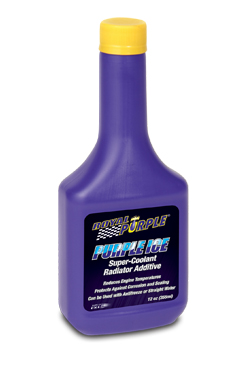 All of the experts we spoke to pointed to the common thinking that distilled water is a much better choice for your cooling system than standard tap water. Our experts explained to us that tap water contains minerals and ions that isn’t present in distilled water, these impurities over time can harm your cooling system and erode your aluminum radiator.
All of the experts we spoke to pointed to the common thinking that distilled water is a much better choice for your cooling system than standard tap water. Our experts explained to us that tap water contains minerals and ions that isn’t present in distilled water, these impurities over time can harm your cooling system and erode your aluminum radiator.
The next question we wanted answered was whether or not an additive or cooling agent would be a good choice for your radiator. Our experts all agreed that there can be a cooling advantage to be had by utilizing an additive. Our experts mentioned popular choices like Red Line Oil’s Water Wetter, Pro Blend’s 40 Below, and Lucas Oil’s Super Coolant. All of our experts explained that testing is the only way to find out what product works best for your application.
One product that is gaining a lot of good reviews by motorsports teams is Royal Purple’s Purple Ice. The Purple Ice additive incorporates multiple wetting agents into the formula providing wetting performance across a wider range of temperatures.
- Non-foaming formula
- Provides 100% corrosion protection, no matter what type of coolant is used
- Can be used in straight water coolant for racing applications
The additive was tested within the military and received amazing results. One Sargent stationed in Iraq had this to say after testing the coolant, “The summers here can be in 140’s in direct sunlight. That kind of heat is hard on our trucks. Recently we used the Purple Ice in my Humvee and I went from running a engine temp of 240° (Almost over heating) in the middle of the day to 210-220°. Normal operation temp is 190-200°.”
The important thing to remember is testing is the only way to discover what offers your application the best cooling advantage. All of the additives listed here can be used in your cooling system without having to worry about damaging your radiator or engine.
Fan Selection
We could write an entire story dedicated to choosing the right fan. Like choosing the correct radiator, there are so many variables to consider. The choice to use electric fans or an mechanical design can be a difficult one. Each has their advantages, the electric fan can be attached to either the front or back of the radiator and gives the driver the option of turning it on and off.
Some have argued that electric fans were the better choice. Many point to the fact that the fan can be ran at full speed when the car was idling, or under a caution period where the risk of overheating was great because of the lack of air traveling through the radiator.
However to add to the argument, OneDirt.com experimented with both electric and mechanical fans on his street stock and found a very interesting result, we tried running one, even two huge electric fans and it would not work on our street stock. We found for our application that a large mechanical fan pulled more air at lower speeds than most electrics.
While there are a lot of variables to consider, Militello of Be Cool has simplified it by providing us a checklist of facts that every team should consider before buying a fan.
- How much room do I have between the radiator and front of the engine, for a puller fan?
- How much room do I have between the radiator and front of the car, for a pusher fan?
- What are the dimensions of the core surface of the radiator, height and width?
- How much horsepower am I trying to cool?
- Do I have the proper AMP alternator?
- What size AMP relay or toggle switch will I need?
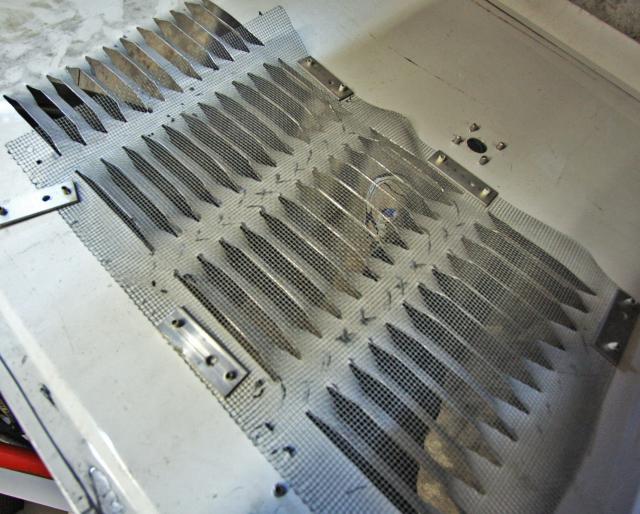
Installing a screen over your grill or air opening, is a great way of reducing the amount of maintenance you will have to perform on your radiator. This will keep dirt and debris from potentially damaging the radiator
Maintenance
Sometimes teams will do everything right when it comes to choosing a radiator and fan, but then forget to spend an hour performing basic maintenance on their radiator and cooling system after an event. It is a pretty easy task that should be done every week especially in dirt track racing. “I would advise teams that are looking for the correct radiator to choose one within their budget that could provide them with the best cooling, but then advise them on how crucial maintenance is,” Says Tutino of C&R. “When someone comes to us and says something about a radiator not providing enough cooling it is usually because of not performing proper maintenance.”
The majority of manufactures that we spoke to explained how teams really should pull their radiator after a weekend of racing to inspect it for damaged fins or leaks. Use a (low-pressure) pressure washer to clean all the debris, dirt, and rubber from the radiator and then use an air hose to blowout the remaining debris that the pressure washer may of missed. “Another good practice is to pull the radiator out and spend some time each week straightening the fins of the radiator with a tweezer,” says Jeff. “It can be a very boring and repetitive job, (especially if your radiator is an older one that has seen a hard life) but by doing this week in and week out you can ensure that the most air as possible is making it through the radiator.”
When a fin of a radiator gets bent it is obstructing that particular airway from cooling the water. Jeff advised against using anything bigger than a pair of tweezers for straightening the fins back. You can also help avoid having the fins bent by building a proper shroud that will help prevent debris from reaching the radiator.
Sidebar title
Cut-To-Fit Radiator Fan Shroud
Our friends at Speedway Motors have a great option for teams that want to try a custom radiator shroud. This universal radiator shroud is made from tough high-impact plastic to withstand today’s rigorous racing.
- 23-3/8″ W x 20-7/8″ L x 2-7/8″ T
- Accommodates up to a 19″ diameter fan
- Keeps motor cool during a long night of racing
- $49.99
Get A Fan Shroud
Often teams think that pulling the fan shroud off of the radiator will help produce better cooling for their engine, but surprisingly Bobby Writesman of Holley Carburetors explains to us that will actually harm your cooling efforts, “One of the biggest mistakes is for someone to remove the fan shroud which allows hot air to be broadcast all over the engine and directly onto the mechanical fuel pump causing fuel to foam.”
Every manufacture we talked to explained how having a shroud increases cooling drastically for the engine. The experts explained to us without a shroud the fan can only pull air through the area the size of the fan. By having a fan shroud it increases the effectiveness of the fan.
Don’t Forget About Your Carburetor 
While writing this story we were offered some helpful tips from Bobby Writesman of Holley Carburetors on what to do to your carburetor during those hot summer months:
“For a carburetor that has been jetted for optimum performance during cooler weather, the arrival of hot and humid weather conditions will usually cause the performance of naturally aspirated engines to appear slightly sluggish. This loss of performance is the result of a richer fuel condition caused by the lack of oxygen in warm air.” While engine temperature can be effected by both rich and lean fuel mixtures there are advantages for proper jetting in all weather conditions. Rich fuel mixtures is actually unburned fuel which is nothing more than wasted gas & money. Further results are fouled spark plug, carbon build-up on valves, poor performance, elevated emissions and in extreme instances the potential for header or exhaust manifold damage caused by raw fuel burning within the exhaust system. In effect the engine is working hard and instead of creating power it is just generating additional ‘heat’.”
Bobby continued, “Many have learned that a lean fuel condition has far greater effect on increased engine temps along with the likely hood of internal engine damage if gone unattended. Lean mixtures create extreme heat within the combustion chambers caused by too much air and too little fuel. Coolants temps can soar and become less effective thus engine temperatures rise until there is premature failure of one or more engine components.
We should note that many customers will never re-jet their bone stock vehicle during hot or cold weather and are very pleased with the engine performance year-round. The points I have listed are possibilities where elevated engine instances may occur with “mild to higher performance engines. For those who may not be sure of their specific engine make-up it is recommended they rely on a professional for additional assistance.”
Basically Bobby is explaining to us that there are dangers both directions of having a carburetor that is jetted too rich or too lean. Make sure you speak with your engine builder and ensure that your carburetor is jetted correct for the hotter conditions.
Conclusions
Ultimately the summer months can be brutal, but this doesn’t mean that to keep the engine cool you have to go out and spend a lot of money. By analyzing and speaking to professionals about what radiator is right for you, and then performing weekly maintenance to that radiator, you can beat these hot summer months.
If you are constantly battling overheating issues and are simply blaming it on the heat then you could be in for a world of hurt. The bad news is you don’t have much time before the extreme heat of the summer months get here. Take a close look at your cooling system and make the necessary changes now so that you don’t have to face these problems that will plague less prepared teams. Make sure you check back to OneDirt.com for part 2 of our story when we will take a closer look at what drivers can do to keep themselves cool during the hot summer months.




